Next Apple Watch extremely unlikely to get FaceTime video calling
A recent rumor claims Apple's next revision of Watch hardware will include FaceTime video calling, and despite offering no actual evidence to back this up, the story has spread wildly. The idea doesn't make much sense though, here's why.
Could FaceTime work on an Apple Watch?
FaceTime, Apple's brand for video chat over IP or cellular networks, was first introduced by Steve Jobs in 2010 for the then-new A4-powered iPhone 4. The S1 chip package in Apple Watch includes a processor that's based on the A5 architecture of an iPhone 4s, a year newer than the first iPhone to support FaceTime. However, there's a lot more that's missing on Apple Watch.
That includes, obviously, a camera. Packing a camera into the bezel of Apple Watch would require a monumental feat of engineering, given that the device is already densely packaged. Unlike an iPhone, the entire front face of the Watch is devoted to screen real estate, with only a narrow bezel surrounding it.
That bezel also curves from the edge of the active display down to meet the body of the Watch. Without radically changing that design, that would force a front facing camera element to look through a rounded glass or sapphire edge, creating a complex distortion in the image.
Alternatively, if Apple made the Watch face taller to accommodate a larger flat region it could place a camera behind, it would result in an odd shape that would erase the company's stated esthetic concerning an "invisible line between hardware and software."
A third option would be to have a camera lens protruding from the edge of the watch. That would not only violate that "invisible line" but also turn the classic, fashionable design of Apple Watch into a clumsy, techy-looking "smartwatch," a product category that other vendors have struggled to sell a few hundred thousand units at bargain prices.
That's not the demographic or the product category Apple wants to target. Recall the feigned outrage Apple attracted when it introduced iPhone 6 with a budget Android-style protruding camera lens. However, having no place for a camera isn't the only obstacle to introducing FaceTime on Apple Watch.
Insufficient resolution to support functional FaceTime
While today's Apple Watch has a FaceTime-era A5 chip architecture and the same 512 megabytes of RAM as the first generations of FaceTime iPhones, it bears little other resemblance to FaceTime-capable iOS devices.
Both Apple Watch models offer a tiny fraction of the screen resolution of even an iPhone 4 (which has 614k pixels); the larger 42mm model has 121k pixels, while the 38mm has 92k pixels. Today's watchOS doesn't really support video playback at all, but watchOS 2 (coming this fall) will introduce support for "short video clips."
At WWDC, Apple described this upcoming functionality as supporting apps such as Vine and its five second videos (a Vine of a Vine on watchOS 2, below, where this three second clip was provided as a "great example of video playing back on the Watch").
Apple's watchOS 2 transition guide defines this new video encoding as H.264 High Profile at a 160 kpbs bitrate and a 208x260 portrait orientation resolution (54k pixels).
Today's users are growing increasingly used to an iPhone 6 resolution (more than 1 million pixels). Even the original FaceTime front facing camera on iPhone 4 delivered a 640x480 resolution (307k pixels). That was okay for its time, but it's considered pretty basic today. The short video format on watchOS 2 offers less than a quarter of that resolution.
The five second Vine Apple presented as a demonstration of short videos on watchOS 2 doesn't exactly suggest that Apple Watch is intended to be a media platform for sending and receiving simultaneous, real time video streams anytime in the near future, even if there were any clear value in being able to see a tiny, limited resolution video chat on ones' wrist.
FaceTime video would simply not be very compelling on the Watch, and video originating on Apple Watch would look terrible on an iPhone, iPad or Mac. That explains why today's Apple Watch focuses on clever ways of visually communicating through doodles, taps and heartbeats: it simply isn't very practical to deliver video chat on such a small screen with currently available technology. However, the screen resolution isn't the only limiting factor beyond having no place for a camera.
Other limitations to supporting FaceTime
With such relatively low resolutions compared to Apple's FaceTime iPhones, Apple Watch could conceivably deliver a scaled down FaceTime video feed with less computing effort (even if you ignore the quality issue). However, there are other resources that are also extremely scaled down on Apple Watch— most importantly the battery.
While computing power and memory physically shrink down on dramatically smaller chips every year, batteries are not getting much smaller per watt hour delivered, at all. Apple Watch devotes much of its volume to its battery, but it still only achieves single day battery life despite a series of aggressive power use minimization strategies.
One of most obvious of these is that the screen shuts itself off at every opportunity. That's a signal that having the display lit up is a big battery burner. To support FaceTime video calls, Apple would have to shoehorn in a camera element, add processing power and account for a big power drain anytime the feature was actually used, all without ravaging its existing battery life.
And despite all of that, the best it could hope to deliver in 2016 is a tiny, pixelized video image that couldn't be very smooth. Additionally, Apple notes that in watchOS 2, whenever a watch app plays short videos the device has to stop background tasks such as heartbeat monitoring.
On so many levels, FaceTime video sounds like a terrible engineering tradeoff made at great expense, or simply an uninformed rumor invented without much thought.
Would FaceTime be useful on a Watch?
Would FaceTime users be excited use a Dick Tracy feature even if such calls were slow to initiate (it already takes a moment on fast iPhone hardware), and then deliver a jerky, pixelated image that clouded the remote user's emotions to the point where one could barely make out what was happening?
That sounds like a non-useful technology demonstration, not a feature on an Apple product. Apple tends to not support features until it can deliver them in a useful, "magical" form.
Take today's Apple Watch remote camera function. It can currently activate the camera on your iPhone and either snap a picture or initiate a 3 second timer for Burst image capture. But it doesn't even attempt to let you capture video, even though all the work in video capture would be performed by the attached iPhone. That's because the feature isn't very valuable without a functional video preview.
Remote photos you take can be reviewed on Apple Watch, but to really see what you've captured you'd want to look on your phone. In Photos, you can use the Digital Crown to zoom into the image to examine it, but this isn't practical for video in a FaceTime session.
Apple touts the larger screens of iPhone 6 and 6 Plus as being incredibly popular, specifically noting that many camera users love the huge "viewfinder" offered by the display. This is also why iPads are commonly used as cameras by tourists, despite the fact that they don't have the best camera hardware.
Screen size is incredibly important when taking photos or when looking at video. Why would anyone want to see a tiny video image on their wrist when it takes less time to pull out an iPhone with a large, clear display? With just a little examination, FaceTime on AppleWatch sounds like a blind guess, not a reasonable, technically achievable, practical, killer feature for next year's hardware.
Cool not Creepy: Apple Watch isn't a Google Glass or Samsung Gear
Other disadvantages related to putting a camera on Apple Watch are highlighted in the history of Google's failed Glass product concept or the original Samsung Gear watch, both of which incorporated a low quality camera that caused more problems than it solved.
Samsung's Gear watch didn't attempt to pull off video calls (highlighting the technical barriers inherent in such a feature), but it did offer to take surreptitious photos or low quality, awkwardly taken selfies, using a camera that bulged out the side of its band.
"The Gear's odd tech proposition feels as voyeuristic as Google Glass...maybe even more so," noted a review by Scott Stein for CNET.
"It's a good camera for a watch — better than you'd think (1.9 megapixels, with 4GB of onboard storage)," Stein wrote. "But most people would pick their phone over the Gear any day. It's also not particularly fast. I attempted to surreptitiously swipe open the camera app and tap on the smartwatch's screen to snap a photo, and the whole process took at least 4 seconds. Just the time between tap and snap seemed to take about a second."
His review centered on the Gear's camera because no other mainstream watch had previously offered such a feature. However, his description that using it "feels weird, and a little upsetting," and his conclusion that it was "a recipe for social weirdness," highlights why. Even Samsung took the camera off its subsequent editions of the Gear watch line.
Beyond the creepy vibe of a wearable camera, incorporating a FaceTime camera would also raise other issues for Apple Watch, such as making it unacceptable in many corporate and government environments where cameras are forbidden by security policy. On phones, camera features can be blocked by device management rules.
However, while the Enterprise quickly embraced iPhones as essential tools for mobile workers, companies are much less likely to want to expand support for every Watch their employees wear to work, particularly if it doubles their management efforts without adding clear new benefits. Without a camera, Apple Watch will find its way into work with fewer barriers, because employers will have one less significant reason for concern.
And outside of work, people wearing an Apple Watch in a bar, at a party or within a public bathroom don't get second looks by the people around them wondering if they are being spied upon by a creepy new invasion of technology into their private world. A FaceTime-equipped watch would shatter that, all in exchange for the dubious value of delivering poor quality video conversations.
FaceTime doesn't fit Apple's stated Watch design goals
Apple Watch excels as a readily available screen for brief interactions: a Glance at your notifications, or the day's calorie burn, or upcoming calendar events, or a quick reply to a message. It also works really well for delivering incremental navigation directions while driving, or even to take an incoming phone call while keeping your eyes and hands on the wheel.
Phone calls through Apple Watch are actually very high quality, largely because its easy to deliver a voice stream without using much network bandwidth. Even basic Bluetooth can deliver decent voice quality conversations, and Apple Watch uses Bluetooth 4.0, which invokes Wi-Fi hardware to speed up data throughput. Video not only requires much more network traffic, but is also more complex to set up when establishing a call. And basic mobile cameras are slow, as evidenced by the Samsung Gear and older iPhones.
Additionally, while taking a brief phone call on your Apple Watch is sometimes more convenient than pulling out your phone (particularly while driving), longer conversations — or those made on the street or in other noisy environments — quickly become awkward when you're talking into a watch.
Adding FaceTime to the mix would make wrist-calls even less practical, because you'd have to hold your arm at a specific angle and stare into it for the duration of the call. That's no longer a quick interaction.
From Apple Pay transactions to sending a heartbeat or quick doodle to a friend, Apple Watch sessions are designed to be simple, quick alternatives to pulling out and interacting with the full range of features available on an iPhone. Apple's guidelines state that average interactions on Apple Watch range from 2 to 5 seconds
.
At WWDC, Apple stressed that developers making Watch apps shouldn't simply try to replicate their iPhone apps on the Watch, but rather seek to expose key features or information that users might want to quickly view or take a simple action on. Apple's guidelines state that average interactions on Apple Watch range from 2 to 5 seconds.
Establishing a FaceTime video session can take that long by itself. Further, FaceTime requires significant image processing, a fully lit screen through the duration of the call (unlike an audio call), and demands a constant, high quality network connection. Why destroy your Watch battery when you can pull out your phone and perform a FaceTime video call faster, with much higher quality, using your iPhone's much larger battery?
Barring a series of vast technical leaps, FaceTime video on your wrist currently makes little sense as a feature, and suggesting that it is "probably" going to be an upcoming feature on the next Apple Watch shows a deep lack of understanding about the product Apple created and an ignorance of what the company is telling its developers to help them to design apps aligned with its design goals.
Tetherless Wi-Fi is a feature of WatchOS 2, doesn't require a new Watch
Other supposed features tied to the FaceTime camera rumor are also poorly thought out speculation, or simply misinformed. For example, the same report imagined that "a new and more dynamic wireless chipset" would be required to support "tether-less" data transfers independent from its connected iPhone.
That isn't true. Apple states (on its public developer website) that today's Apple Watch will gain the ability to connect to known Wi-Fi networks directly with simply a software update in watchOS 2 later this year.
"Using NSURLSession, Apple Watch can now communicate directly with known wifi hotspots using the new Tetherless Wi-Fi feature in watchOS 2," Apple notes. No new hardware needed.
The same source of these rumors similarly predicted that Apple would release a Home app for controlling HomeKit devices in iOS 9. HomeKit is a framework for developers to create their own apps, something several home automation developers (such as Insteon and Philips) have already done. There's no Home app needed in iOS 9.
Additionally, while the site joined many others in predicting the launch of new Apple TV hardware at WWDC, it specifically said a new Home app would appear, "utilizing the Apple TV as a hub connecting all of the HomeKit devices."
HomeKit devices don't need a "hub" outside of Wi-Fi or Ethernet connectivity. Also, Apple TV is only needed to access HomeKit devices remotely, as it acts as a secure gateway for requests and commands issued from outside the home to HomeKit devices inside the user's private network.
Using Apple TV as a remote gateway is already a feature of HomeKit. In fact, at WWDC Apple introduced a new secure mechanism allowing user remote access without requiring Apple TV, using iCloud instead. These rumors are so poorly informed that they're predicting the past, not the future.
Rumor rain
Unfortunately, it's easy to float non-sensical rumors with zero evidence and have them picked up by a wide range of content bloggers and even legitimate appearing news sites that don't know anything about technology or Apple. When this speculation is wrong, it either quickly gets forgotten or the predictor turns around and says that Apple "delayed" planned features. In many cases this has not been true.The reality is that the original prediction was simply wrong
When a weather newscaster forecasts rain that doesn't happen, it would appear foolish to blame the earth for not raining as planned, then announce that the earth is making a big mistake because "we need rain!" and then, when it does rain, complain that it took longer than predicted. The reality is that the original prediction was simply wrong.
In this case, it appears that there are no clouds on the radar to suggest a precipitation of FaceTime Apple Watches; Apple TV already supports HomeKit (no Apple Home app required); and that tether-free W-iFi is a feature all Apple Watch owners will get this fall in watchOS 2, not something anyone will have to wait for new watch hardware to get.
 Daniel Eran Dilger
Daniel Eran Dilger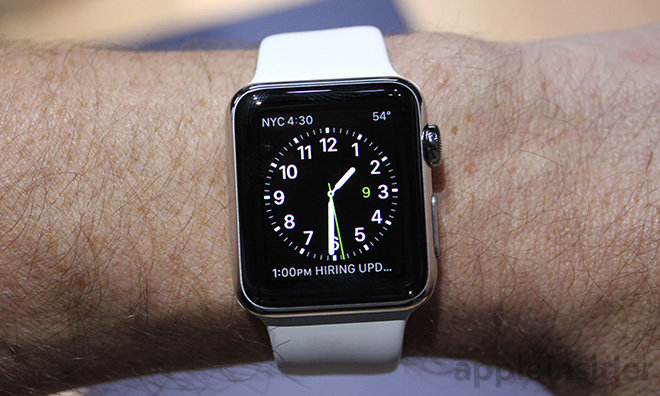
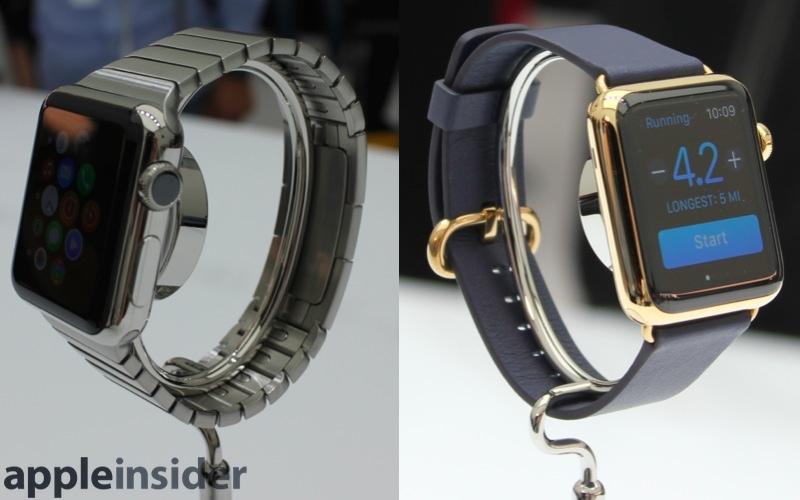
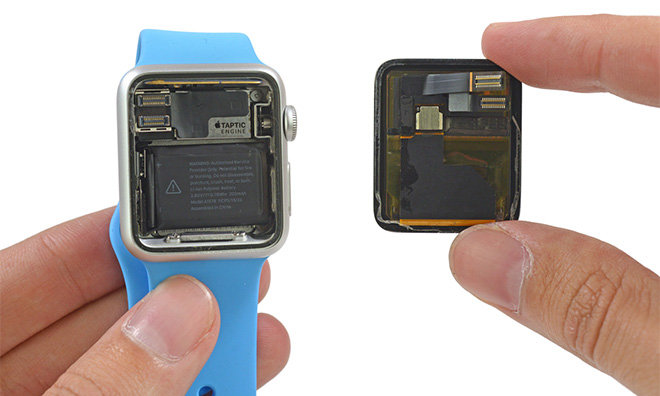
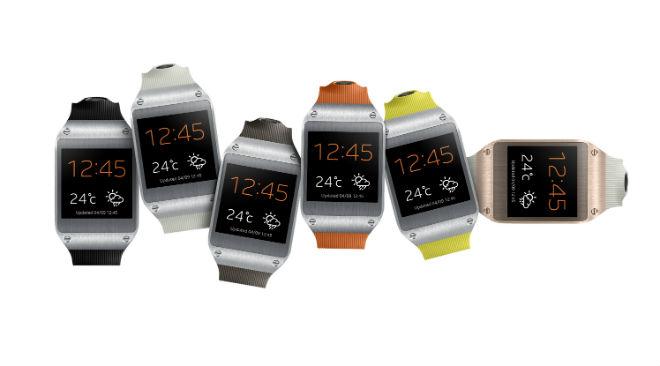
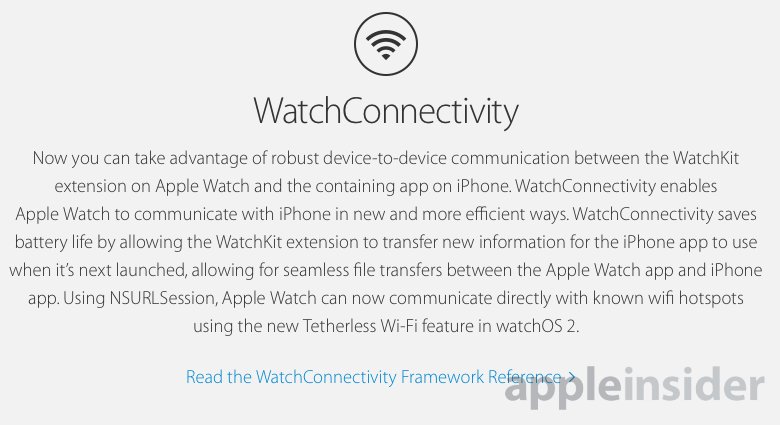











 Andrew Orr
Andrew Orr
 Wesley Hilliard
Wesley Hilliard
 Amber Neely
Amber Neely

 William Gallagher
William Gallagher

 Malcolm Owen
Malcolm Owen








